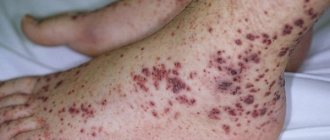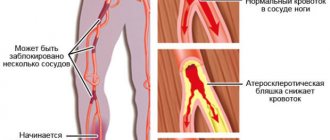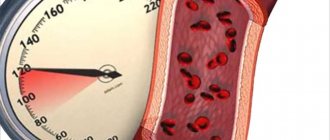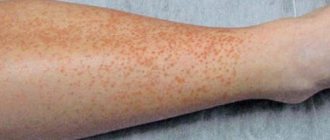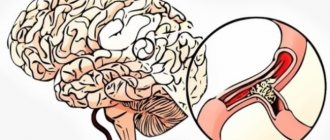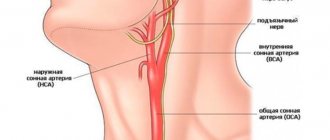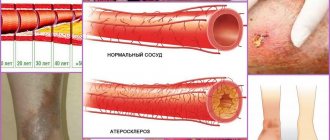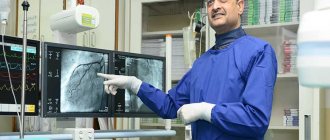A doctor treating atherosclerosis can tell you what medications to use if such an unreassuring diagnosis is made. Healers can also give certain advice - folk wisdom is rich in recommendations and options for preparing compositions. If atherosclerosis has already been identified, you should not delay treatment. The sooner a patient changes his lifestyle, reviews his diet, and starts taking medications prescribed by a doctor, the higher the chances of living a long and happy life with a minimum of health complications.
Relevance of the problem
Residents of different countries, representatives of all nationalities and age groups know which doctor treats atherosclerosis. Currently, vascular disease associated with the appearance of fatty deposits is one of the leading causes of death in humans. This is especially pronounced in developed countries. Scientists, figuring out what provokes this outcome, discovered the influence of everyday life. The risks of atherosclerosis increase due to poorly chosen nutrition, small and infrequent physical activity, and the presence of bad habits.
Often a person has no idea how to treat atherosclerosis of the arteries, moreover, he does not even suspect that he has such a disease. The heart may respond with pain, however, the patient chooses the drugs for himself, without consulting a doctor, and is only surprised at how weak their effectiveness is. In order not to be among such lovers of ineffective self-medication, if you have any health problems, you need to contact a qualified professional. The doctor will make an accurate diagnosis and select an adequate therapeutic course.
Who treats atherosclerosis? Choosing the right doctor
Atherosclerosis is an important problem in modern society. The main reasons for the development of pathology are considered to be addictions, lack of physical activity, eating disorders, failure to maintain adequate sleep and wakefulness, and the increased influence of stress factors on the body.
If the disease is not detected and treated in a timely manner, its serious complications may develop, which often cause death or profound disability of the patient. If you suspect you have this pathology, you should consult a specialist. To do this, you should find out which doctor treats atherosclerosis.
The first symptoms of atherosclerosis
Atherosclerosis is a systemic disease that affects the inner lining of the vascular bed. With elevated levels of cholesterol and blood sugar, atherosclerotic plaques are deposited on the inner lining of blood vessels. Over time, the diameter of the vessels decreases, which creates an obstacle to normal blood flow. As atherosclerosis progresses, circulatory disturbances occur in the vital organs of the human body. This pathology is insidious in that in the initial stages it has no clinical manifestations.
The most common forms of the disease :
- atherosclerotic damage to blood vessels of the lower extremities;
- atherosclerosis of cerebral vessels;
- atherosclerotic lesions of the feeding arteries of the heart;
- multifocal atherosclerosis, which combines all forms of the disease.
In the presence of a pathological process in the coronary artery network, oxygen starvation of the heart tissue develops, which becomes the cause of coronary heart disease. If this is not treated, the risk of myocardial infarction increases many times. The main symptoms of heart disease and its vascular network are pressing pain in the heart area during physical activity or during complete rest, shortness of breath, and fatigue.
Atherosclerosis of cerebral vessels is manifested by a decrease in cognitive function, cephalalgia, disturbances in the emotional-volitional sphere, and deterioration of attention. Symptoms of atherosclerotic damage to the blood vessels of the legs are constant swelling, a feeling of heaviness and numbness in the legs, the skin becomes cold and dry upon palpation. If this form of the disease is not treated, it progresses, causing trophic disorders. Impaired blood supply is manifested by redness of the lower extremities, up to the formation of trophic ulcers. If the disease is not treated at this stage, then tissue death of the lower extremities occurs.
To prevent the development of atherosclerosis, you should monitor your blood cholesterol levels. If you suspect the development of this pathology, you need to contact a specialist, finding out who treats this disease.
Doctor for initial or preventive examination
Patients often have questions about which doctor helps to identify atherosclerosis in a timely manner. People over 35 years old to undergo a preventive examination with a therapist once a year . First of all, you should take a general blood and urine test, a detailed blood biochemistry with a lipid profile, and undergo electrocardiography. If, based on the test results, the specialist notices pathological changes characteristic of atherosclerosis, he will then refer you for a Doppler or angiographic study.
These techniques make it possible to give an assessment of vascular blood flow in a particular part of the human body. Doppler sonography is most often used to study the state of blood flow in the vessels of the lower extremities. Using angiography, doctors evaluate coronary and cerebral blood flow. If disturbances in the blood supply to the organs being examined are detected, the therapist refers patients to more specialized specialists who will prescribe the necessary treatment and take control of the patient. If the disease is identified in time and treated, the harm it causes to the body will be minimal!
Which doctor treats cerebral atherosclerosis
Atherosclerotic damage to cerebral vessels is very dangerous, so it must be identified and treated as early as possible. This form of pathology is treated jointly by an angiologist and a neurologist .
Often, atherosclerotic damage to the blood vessels of the brain leads to a violation of cerebral circulation of the hemorrhagic type (rupture of a vessel with the formation of intracerebral hematomas). This is a complication of cerebral atherosclerosis, which is called hemorrhagic stroke. In this case, the patient will be treated by a neurosurgeon and, possibly, a resuscitator.
To avoid negative consequences for the body, doctors recommend adjusting your diet by completely eliminating cholesterol-containing foods, including active sports in your daily routine, and stabilizing your sleep and wakefulness patterns. It is recommended to treat this form of the disease with the help of lipid-lowering and vascular drugs, drugs that improve the rheological properties of the blood.
If blood pressure increases, treatment with antihypertensive drugs is indicated.
Which doctor treats atherosclerosis of the lower extremities
Depending on the location of the pathological process, various specialists can treat the vessels of the legs. If there are problems with the venous vascular bed, a phlebologist , while an angiologist . vascular surgeons are called upon to treat diseases affecting the vessels of the lower extremities . These specialists can treat obliterating atherosclerosis of the vessels of the legs using both conservative and surgical methods.
Drug treatment of this pathology is aimed at improving blood circulation in the tissues of the legs, normalizing serum cholesterol levels, stopping the inflammatory reaction and reducing swelling. In case of severe pain, the prescription of drugs for analgesia is indicated.
Surgery is required when there are serious blood flow disorders or drug treatment does not bring the desired result. In these cases, operations are performed to remove obstacles to vascular blood flow. If atherosclerosis of the lower extremities is not treated, gangrene develops over time, which is a vital indication for amputation of the lower extremities.
Doctor's choice for other types of atherosclerosis
In case of atherosclerotic damage to the feeding arteries of the heart, patients will be treated by a cardiologist. It can also act as the primary link for the detection and initial stage of treatment of the disease. Atherosclerosis of the brachiocephalic and carotid arteries, as well as the aorta, can be treated by a specialist angiologist.
To avoid atherosclerosis, you should lead a healthy, active lifestyle, get rid of addictions, and undergo preventive examinations. If a pathology is discovered, you need to start treating it as early as possible by seeking help from an appropriate specialist. This will help avoid the fatal complications that this insidious disease can bring!
General principles of disease control
When figuring out how to treat atherosclerosis at home, you should first reconsider your daily routine. The state of the circulatory system greatly depends on how a person behaves and what he eats. Basic rules include introducing dietary restrictions. If possible, you should avoid foods rich in cholesterol. If you do not follow this principle of treatment, no medications, even the most powerful ones, will give a significant result.
An important aspect of therapy is physical activity in combination with the use of compounds that allow you to quickly cleanse the circulatory system of cholesterol and transformation products of this compound. The doctor, explaining how to treat atherosclerosis (abdominal aorta and other localized areas), will definitely emphasize the importance of the nutrition and cleansing program.
If atherosclerosis is detected in a woman during menopause, treatment will include estrogen drugs.
Which doctor should I contact for atherosclerosis?
The modern rhythm of life forces a person to snack on the run, sit for a long time at the computer and often lead a sedentary lifestyle. All this, along with hereditary predisposition and bad habits, can lead to disruption of lipid metabolism, accompanied by “clogging” of blood vessels. Which doctor treats atherosclerosis and is it worth worrying about this? That’s what we’ll talk about today.
What is vascular atherosclerosis
Atherosclerosis is a generalized, that is, systemic pathology, which is characterized by the presence of specific fatty plaques on the walls of blood vessels. Both large and medium-sized arteries that have many branches (aorta, external and internal carotid, brachiocephalic trunk) and areas of small diameter (coronary vessels of the heart) are affected. The formation of a “growth” that blocks the lumen occurs in several stages:
- First, the inner lining of the vessel is damaged. This can be triggered by the action of an infectious agent (virus or bacteria). At the site of this defect, cholesterol begins to be deposited and a lipid stain appears.
- As it progresses, the volume of the formation increases, and a plaque forms , protruding into the lumen of the artery. An inflammatory process develops, accompanied by the proliferation of connective tissue fibers.
In practice, we observe two ways for the further existence of lipid protrusion: either it calcifies (atherocalcinosis), or the surface ulcerates and a blood clot forms. The latter can clog the vessel in place or “break off” and be carried by the bloodstream (embolism).
Causes of the disease
The main cause of vascular atherosclerosis has long been disorders of lipid metabolism, which is expressed in an increase in fat levels:
- cholesterol,
- triglycerides,
- low and very low density lipids.
Many external and internal factors lead to an increase, some of which a person can influence, others impossible to change. I have listed most of them in the table below.
Symptoms
Unfortunately, it is impossible to notice the symptoms of vascular atherosclerosis at the first stage of its development. I advise my patients who have reached a critical age to undergo a physical examination at least once a year and check their blood lipid levels . This is the only way to identify the problem in time, without waiting for complications to develop (stroke, myocardial infarction, arterial aneurysm, etc.).
I would like to draw your attention to the following fact: the signs of the disease depend entirely on which of the organs’ vessels are damaged to a greater extent. Favorite locations: brain, heart, upper or lower extremities, kidneys, thoracic and abdominal aorta.
Atherosclerosis can manifest itself:
- headache and dizziness, decreased memory and attention;
- pain in the legs while walking;
- chest discomfort, shortness of breath;
- hypertension.
Which doctor should I contact?
The deposition of plaques occurs in the vessels, and the organs that feed on them suffer from this. Who exactly treats atherosclerosis in this case? The truth is that most doctors encounter this pathology and it requires a multidisciplinary approach.
Usually, the first doctor contacted at the stage of identifying a disease is a therapist. He also prescribes a diagnostic minimum and refers to a specialist, taking into account the specifics of the patient’s complaints. In case of damage to the nervous system (dizziness, memory impairment, movement disorders), further treatment is carried out by a neurologist . If atherosclerosis involves the vessels of the extremities or abdominal aorta, you will need to consult a surgeon . Chest pain, difficulty breathing and swelling are grounds for visiting a cardiologist .
All these doctors often resort to the help of angiologists or angiosurgeons , that is, those who directly deal with vascular pathologies. They are the ones who decide on the advisability of surgical intervention.
Diagnostics
Diagnostic measures for atherosclerosis include:
- biochemical blood test and lipid profile;
- ECG;
- Doppler ultrasound, duplex, triplex scanning of blood vessels;
- angiography when indicated.
Expert advice
Treatment of the disease is difficult, as it requires the patient not only to take medications in a timely manner, but also to comply with certain rules. I recommend to my patients to radically change their lifestyle. It is necessary to play sports, give up alcohol and smoking, normalize your daily routine, leaving 6-7 hours for sleep. You need to reconsider your eating habits: eat more vegetables, fruits, cereals, seafood. Read about diet for atherosclerosis here.
Treatment consists of taking lipid-lowering drugs:
- statins (“Atoris”, “Crestor”, “Rozulip”);
- fibrates (“Grofibrat”, “Lipantil”, “Trilipix”);
- fatty acid sequestrants (“Guarem”);
- nicotinates (nicotinic acid).
More information about medications for atherosclerosis, duration of the course and rules of administration can be found in the article at the link.
Clinical case
A 65-year-old man, P., came to see me with complaints of periodic pressing headaches, ringing and crackling in the ears, dizziness, accompanied by unsteadiness while walking, and memory impairment for recent events. From the anamnesis: for the last six months he has noted an increase in blood pressure, but has not received treatment. He does not abuse alcohol; he has been smoking for about 40 years. Objectively: nutritional obesity (BMI=28), blood pressure 155/100 mm Hg, in the neurological status there are scattered cerebral microsymptoms (limited upward and sideways gaze, slight asymmetry of the nasolabial folds). Preliminary diagnosis: cerebral atherosclerosis, encephalopathy I.
The following examination methods were used: clinical and biochemical blood tests, ECG, triplex scanning of the vessels of the head and neck. The diagnosis was confirmed. The following were prescribed: Atoris, Cardiomagnyl, MagneB6, Cytoflavin, Enap, Gliatilin. After two weeks of therapy, the patient noted an improvement in his condition.
What medications did your doctor prescribe for atherosclerosis and how often did you order tests? In such cases, it is important to adhere to the protocol so as not to worsen the existing problem. Share your answers in the comments and we will help you with advice.
The following sources of information were used to prepare the material.
Medicinal assistance
There are several categories of medications used as part of the treatment course. The doctor, explaining how to treat vascular atherosclerosis, what medications will come to the rescue in a particular case, will tell you why the choice was made on a certain category of medications. However, regardless of the chosen remedy, you should not count on a miracle: drugs will give results only when combining treatment and proper nutrition, as well as lifestyle changes. All currently existing medications have side effects of varying severity, which imposes serious restrictions on the possibility of self-medication. When prescribing a course, the doctor will immediately warn you what signals indicate intolerance to the composition and the need to urgently end the dose.
When to contact a phlebologist
Heaviness, burning sensation and pain in the legs, the appearance of swelling and spider veins may indicate problems with the veins. If you have such symptoms, you should consult a specialist called a phlebologist. This doctor studies the normal and pathological movement of blood through the vessels of the lower extremities, determines the violation of blood outflow, determines the cause of the development of pathological processes and prescribes appropriate treatment.
A phlebologist diagnoses and treats the following diseases:
- varicose veins in the legs;
- chronic venous insufficiency;
- thrombosis.
A nicotinic acid
When choosing what and how to treat vascular atherosclerosis, you should take a closer look at nicotinic acid and drugs created on this substance. Both the specified compound itself and its production are currently actively used in medicine for the treatment of heart diseases and pathologies of the vascular system. Proper consumption can reduce the concentration of cholesterol in the blood and lower the content of triglycerides. The compound inhibits lipolysis, that is, lipids cannot be released by tissues into the circulatory system, which means that the bloodstream is not contaminated. Taking nicotinic acid helps increase the blood levels of high-density lipoproteins, which are considered the most beneficial of all forms of fatty acids. Such cholesterol is vital for the human body and does not cause harm, but with poor nutrition and the presence of pathologies, its content is quite low. The use of medications helps increase the level by almost a third.
When understanding how and how to treat atherosclerosis of the vessels of the brain, largest arteries, and limbs, you should take a close look at the qualities of nicotinic acid. The compound has a positive effect on blood pressure and relieves a person of hypertension, which almost always accompanies atherosclerotic plaques. The use of the compositions helps strengthen the vascular walls and expand the lumens. Nicotinic acid and its transformation products are prohibited from being used against the background of impaired liver function, since the risk of lipid hepatosis increases. Do not use medications for stomach ulcers. Among pharmacy names, “Niacin” is especially well known.
Atherosclerosis, its forms and consequences
Atherosclerosis is a disease that affects elastic and muscular-elastic arteries. The reason for its development is a violation of protein and lipid metabolism, which leads to the deposition of cholesterol plaques and LDL. The walls of the vessels become thinner, the lumen decreases, and the affected areas interfere with normal blood circulation. Classification of the disease:
- According to the place of formation of cholesterol plaques: atherosclerosis of the aorta, cerebral vessels, limbs, kidneys, coronary arteries.
- According to external symptoms: initial (changes in blood and urine tests), clinical (appearance of pain, venous network, nodes, hair loss on the extremities), last stage (vascular dementia, necrosis, ischemia).
- Features of the course of the disease: exacerbation, stabilization of health, appearance of regression.
Atherosclerosis is a chronic pathology that often leads to the development of stroke, heart attack, renal hypertension, and aortic aneurysm. The disease can develop rapidly or take years to form plaques throughout the body.
It is important to know! If large vessels become blocked, there is a risk of tissue necrosis. Untimely assistance to the patient leads to a significant decrease in the quality of life and death 7-10 years after the onset of the first symptoms.
Fibrates
When understanding how and how to treat atherosclerosis of the heart, aorta, and plaques in the vessels of the limbs and brain, it is worth taking a closer look at the category of fibrates. Such medications are designed to inhibit the generation of lipids by the cells of the human body. Studies have shown that with food we get the required amount of fat and even more than is required, which means there is no need for internal generation of lipids. If the activity of cells that produce fatty compounds is reduced, the functionality of other structures is not affected, while the lipid profile improves.
A classic representative of this group is a medicine sold in pharmacies under the name Clofibrate. True, when choosing how to treat atherosclerosis of the abdominal aorta, brain, and other areas of localization, it is worth remembering that fibrates have a negative effect on the liver. While taking medications, the risk of developing gallstones increases.
Therapeutic methods
After the diagnosis is confirmed - atherosclerosis, who treats - the doctor, it is determined that the time has come for treatment.
Patients with various forms of localization of vessels affected by atherosclerotic plaques are usually prescribed the following groups of drugs:
- Medicines intended to lower cholesterol levels in the blood, inhibit cholesterol synthesis in the body, reduce the intensity of absorption of “bad” cholesterol by the gastrointestinal tract: Cholestyramine, Guarem, Zocor, Lipanor, Essliver forte, Probucol.
- Drugs to reduce blood density and inhibit the process of blood clotting: anticoagulants and antiplatelet agents. These are medications such as Heparin, Parnaparin, Hirudin, Thrombo ACC, Aspirin.
- Drugs that inhibit adrenergic receptors that affect heart rate (beta blockers).
- ACE inhibitors, which block the production of enzymes that increase blood pressure.
- Diuretic drugs help lower blood pressure, which reduces the likelihood of developing atherosclerosis.
SJK
If the appearance of cholesterol plaques in blood vessels is diagnosed, you will have to figure out how, with what and where atherosclerosis is treated. However, if the disease has not gone too far, surgery is not required, therapy at home is sufficient - the doctor will prescribe medications and choose the frequency of clinical studies to test the effectiveness of pharmaceutical products. Sometimes, among all the variety of medications, the doctor advises focusing on FFAs - bile acid sequestrants. This category includes specific agents that stimulate the entry of bile acids into strong bonds that are not chemically active. The products of such reactions are soon eliminated from the body with virtually no negative consequences.
Having figured out how to treat atherosclerosis of the aorta, what it is and why it is dangerous, the patient can understand the importance of following the course recommended by a specialist. If the doctor insists on FFA, then the best result will be obtained by removing bile acids, cholesterol, and lipids from the circulatory system. Research has shown that FFAs can cause undesirable effects. In most cases, they are quite insignificant: people suffer from increased gas formation or complain of bowel problems. Side effects disappear upon completion of the therapeutic program. In SZhK pharmacies, the products “Leskol” and “Kolestipol” are presented. The pharmaceutical products Cholestyramine, Tribusponin, and Polysponin have a good reputation.
Reason for visiting a doctor
The development of the disease can begin at an early age, but since symptoms do not appear at the initial stage, the disease is diagnosed already with severe pain and discomfort in the legs.
The deposition of cholesterol plaques and lipids on the walls of blood vessels leads to a narrowing of the lumen of the arteries. When this phenomenon is mild, the disease can be identified based on research. But most often, patients consult a doctor with the following clinical signs:
- Manifestation of intermittent claudication. The symptom is manifested by excessive fatigue of the lower extremities during physical activity. During rest, the discomfort disappears. The intensity of pain directly depends on the degree of vascular damage.
- Feeling pain at rest. Characteristic of more advanced forms of the disease. To relieve pain, the patient has to sleep with his legs off the bed.
- Hair loss in the lower leg area. Indicates a violation of blood circulation in the lower extremities.
- Formation of trophic ulcers. Often causes gangrene and amputation of part of the leg.
- The appearance of a feeling of numbness in the limb. Poor circulation leads to problems with the innervation of the affected areas.
Statins
This category of drugs is used quite often if it is necessary to choose what and how to treat cerebral atherosclerosis. However, statins also give good results for atherosclerotic plaques in other areas of localization. Currently, products of this class are among the most popular, and this is not at all accidental - they are characterized by maximum effectiveness against cholesterol deposits.
The use of statins can reduce the production of cholesterol in the body. When choosing what and how to treat atherosclerosis of the vessels of the lower extremities, brain, coronary vessels, it is worth taking a closer look at the drugs “Simvastatin” and “Lovastatin”. Pravastatin tablets have proven themselves well. The doctor may suggest that the patient take a course of Atorvastatin or take Cardiostatin. True, one cannot count on miracles: statins give a pronounced effect only when combining drug treatment and changes in drinking habits, nutrition, as well as a revision of lifestyle in favor of a more active daily routine.
Atherosclerosis: which doctor treats the disease and where to get help?
In the modern world, more and more people are suffering due to untimely treatment of life-threatening diseases. Atherosclerosis is one of these types of diseases.
Atherosclerosis (ICD 10) is a chronic disease in which cholesterol is deposited in the walls of blood vessels, resulting in the appearance of an atherosclerotic plaque, which contributes to the narrowing of the lumens of blood vessels. For this reason, blood flow is disrupted and organs suffer, which do not receive sufficient blood flow, which is why they subsequently lose the ability to function stably and efficiently.
To avoid complications, it is important to consult a doctor and diagnose the pathology as quickly as possible. Below we will talk about which doctor treats atherosclerosis and who to contact.
When should you ask for help?
Usually, the first assumptions about your state of health and the presence of this disease arise from your local internist or family doctor. Since processes that invariably affect the condition of the walls of blood vessels appear in most people over the age of 45 years. But the detection of this phenomenon is quite difficult to track without a specific study of the body’s processes.
Read about the causes of the disease in the article; You can learn about risk factors by following the link. And now he finds out who treats atherosclerosis.
Which doctor treats atherosclerosis?
Therapist. At the first symptoms, you should contact your local physician, who, due to his competence, may well provide the patient with referrals for the examinations necessary to confirm the diagnosis. Based on the data received, the specialist has the right to redirect the patient to a doctor of the profile necessary for further treatment and study the essence of the problem.
- Neurologist. With a clearly formulated diagnosis related to cerebral vessels, if the patient has severe headaches, nausea or loss of consciousness, then it is necessary to be observed by this specialist in order to avoid many pathologies.
Including the possibility of the formation of encephalopathy - a disease in which all brain processes completely change due to a complete change in the structure of brain tissue. After all, the main task of this doctor is the desire to restore impaired blood flow in order to avoid irreversible consequences.
|
|
|
- Cardiologist. Most often, the manifestation of atherosclerosis is noticeable to cardiologists, so if you notice pain in the heart, shortness of breath, sweating, it makes sense to go to him for an ECG and a full diagnosis. Early diagnosis of this disease reduces the risk of heart attacks and other heart-threatening diseases.
- Vascular surgeon (angiologist). You should come to an angiologist if you feel numbness or tingling in your limbs. It will also demonstrate to the doctor that you have problems with blood vessels; a constant feeling of chilliness in your legs and arms, indicating insufficient blood supply and a danger to maintaining health in your body.
- Nephrologist. Among other things, the kidneys can also be affected by this disease. Therefore, if you feel that not everything is okay with them, then you should contact this specialist for a full-scale study and prevent possible consequences.
Knowing which doctors treat cerebral atherosclerosis, it’s worth talking about where to find them and what needs to be done.
Where does this happen and what examinations are needed?
Where is atherosclerosis treated? First of all, treatment implies that it is necessary to rid yourself of psychological and physical stress and normalize the body's metabolic processes. Most often, patients are prescribed medications aimed at lowering blood lipid levels. They improve the elasticity of vascular walls.
After the doctor finds out exactly what you feel and what processes in your body have stopped working properly, he will give you a referral for biochemical blood tests to confirm elevated cholesterol levels and an ECG.
Further, in order to know for sure what is happening and how to help the body, you need to go through other specialists:
- cardiologist;
- a vascular surgeon - to find out if there are any circulatory disorders in the extremities;
- neurologist - to determine the degree of blood flow in the brain;
- ophthalmologist to check for changes in vision.
Find out here whether folk remedies (herbs) are effective in fighting the disease; and how to deal with it, read here.
Clinics in Russia
Average prices
The cost of basic diagnostic procedures on an average across Russia varies around several thousand rubles. Eg :
- An initial consultation with a cardiologist will cost the patient an average of 1500-1700 rubles.
- General cholesterol test – 200 RUR.
- An ECG for a patient will cost from 500 to 800 rubles, depending on the choice of clinic.
Attention to the circulatory system
Understanding how to treat atherosclerosis of the aorta, what this disease is and why it is scary, as well as finding out the features of the pathology associated with cholesterol accumulation in other parts of the circulatory system, it is important to understand: only complex treatment will get rid of the problem. No matter what means a person takes to stabilize blood cholesterol levels, there is always a need for measures and medications that help normalize the condition of blood vessels. Only as adequate functionality of the vascular system is achieved can one expect minimal risks of complications.
It will not be possible to cope with atherosclerotic plaques without stabilizing the blood flow. The doctor, explaining how to treat atherosclerosis of the vessels of the lower extremities, brain and other areas of localization, focuses on the restoration of the vascular system affected by fatty deposits. There are several categories and types of tools that have worked well as elements of a complex course. The doctor selects the optimal class of drugs that are most relevant in a particular case. Medicines are chosen individually, taking into account the disorders caused by the appearance of plaques.
Which doctor treats atherosclerosis of the lower extremity vessels?
Atherosclerosis of the vessels of the lower extremities is a dangerous disease that requires strict adherence to all doctor’s instructions. Symptoms of the disease do not appear at an early stage, so patients often seek help when the lumen of the arteries is narrowed to 80%. A therapist may suspect an insidious disease, but the treatment is carried out by another specialist.
Reason for visiting a doctor
The development of the disease can begin at an early age, but since symptoms do not appear at the initial stage, the disease is diagnosed already with severe pain and discomfort in the legs.
The deposition of cholesterol plaques and lipids on the walls of blood vessels leads to a narrowing of the lumen of the arteries. When this phenomenon is mild, the disease can be identified based on research. But most often, patients consult a doctor with the following clinical signs:
- Manifestation of intermittent claudication. The symptom is manifested by excessive fatigue of the lower extremities during physical activity. During rest, the discomfort disappears. The intensity of pain directly depends on the degree of vascular damage.
- Feeling pain at rest. Characteristic of more advanced forms of the disease. To relieve pain, the patient has to sleep with his legs off the bed.
- Hair loss in the lower leg area. Indicates a violation of blood circulation in the lower extremities.
- Formation of trophic ulcers. Often causes gangrene and amputation of part of the leg.
- The appearance of a feeling of numbness in the limb. Poor circulation leads to problems with the innervation of the affected areas.
Return to contents
Who to contact?
Consultation with a therapist
If you detect at least one of the listed symptoms, it is recommended to consult a doctor. The doctor will conduct a survey and examine the affected areas. The information obtained will help to suspect vascular atherosclerosis. After the examination, the therapist refers the patient for further treatment to an angiologist. For a more accurate diagnosis, the following diagnostic measures are carried out:
- clinical and biochemical blood tests;
- electrocardiogram;
- Vascular ultrasound;
- CT.
Return to contents
How can an angiologist help?
A consultation with a therapist is needed in order to determine which specialist to contact next. An angiologist treats atherosclerosis of the lower extremities associated with damage to arterial vessels. The doctor prescribes drug therapy, which includes the following groups of medications:
- Medicines that normalize blood cholesterol levels. Taking these medications is necessary to destroy existing plaques and prevent the formation of new ones.
- NSAIDs. Used for pain relief and prevention of blood clots.
- Medicines to support the functioning of the cardiovascular system. Designed to improve the functioning of the heart muscle, normalize pulse and heart rhythm.
Return to contents
Other specialists
In small clinics, the position of an angiologist is combined with a phlebologist, who simultaneously treats diseases of the veins and arteries.
If the patient has damage to the venous and arterial vessels of the lower extremities, this specialist treats the pathology independently. In hospitals where there are two doctors, therapy is carried out jointly. Atherosclerosis simultaneously affects the vessels of other organs and systems, so you may need to consult the following specialists:
- Cardiologist. Specializes in coronary artery disease. This deviation may be a complication of leg diseases.
- Neurologist. In pathologies of the legs, damage to the vascular network of the brain is less pronounced. Therefore, consulting a doctor will help to promptly identify narrowing of the arteries.
- Endocrinologist. Often the pathology occurs against the background of diabetes mellitus or other endocrine diseases. In such cases, therapy is carried out comprehensively.
- Nutritionist. Since the cause of the disease is the deposition of cholesterol, proper nutrition will prevent the formation of new plaques and will help in the treatment of pathology.
- Surgeon. In severe cases of the disease, when conservative treatment does not bring positive results, surgical intervention is performed, which is performed by this doctor.
Return to contents
Prevention
The deposition of cholesterol plaques in blood vessels is a dangerous abnormality that leads to severe complications and even partial amputation of the leg. Therefore, the disease is easier to prevent than to treat. To do this, it is recommended to adhere to a healthy lifestyle and proper nutrition. Avoid drinking alcoholic beverages and tobacco, and during the acute period of illness, give up these bad habits. Regular exercise, especially with a sedentary lifestyle, will help prevent not only atherosclerosis, but also joint diseases.
Where to begin?
Analyzing how and how to treat cerebral atherosclerosis and its consequences, the doctor can advise the patient to undergo a course of therapy with drugs that dilate the vascular lumens. There is quite a wide variety of compositions on sale that have these qualities, allowing for maximum filling of blood vessels. Stabilization and activation of blood flow eliminates oxygen starvation, which undermines the health of cells in areas of lipid growths. These areas suffer from a lack of nutritional components, making it especially important to ensure stable blood flow to the affected areas. Normalizing the lumens and expanding the vascular system help reduce blood pressure and eliminate excess stress on the cardiovascular system. Most often, doctors recommend taking Papaverine or Halidor. No-Shpa tablets have proven themselves well. You can try using the drug "Nikoshpan".
Among other drug options that can be included in complex therapy, there are drugs that affect the peripheral nervous system. When choosing how to treat atherosclerosis, what compounds to use to stabilize the vascular system, you can take a closer look at the Diprofen and Andekalin tablets. They allow you to take control of the generation of nerve impulses that set the rhythm of muscle fiber contraction. A decrease in muscle tone is accompanied by stabilization of blood flow. Sometimes the doctor advises stopping at “Beznotol” or “Mydocalm”.
Causes of pathology and places of its localization
The main causes of atherosclerosis are the following factors:
- excessive consumption of alcohol-containing products;
- smoking;
- fatty, high-calorie foods with a lot of cholesterol;
- sedentary and sedentary lifestyle;
- frequent stressful situations and nervous tension.
All this leads to the fact that cholesterol is deposited on the walls of blood vessels, thereby gradually narrowing the lumen and disrupting the outflow of blood, causing:
stroke;- thrombosis;
- thrombophlebitis.
Previously, the disease in most cases affected only men over 50 years of age, but recently atherosclerosis has also been diagnosed in women. People with diseases of the endocrine system, in particular diabetes mellitus, are at particular risk.
Atherosclerosis of cerebral vessels
With this type of atherosclerosis the patient:
- intelligence decreases sharply;
- memory problems begin;
- Concentration and overall coordination of movements deteriorate.
In this case, the patient often experiences headaches and dizziness, becomes irritable, whiny, picky and fussy. It is worth noting that such patients usually get irritated and angry without any reason, the mood is constantly depressed and depressed.
Atherosclerosis of the brachiocephalic arteries can also be included in this category, since this disease can cause prolonged ischemia, which in most cases leads to cerebrovascular accident or stroke.
One of the most severe complications of cerebral atherosclerosis is cerebral hemorrhage, leading to stroke. During a stroke, the functioning of the brain and its functioning are generally always disrupted, which subsequently causes paralysis of the patient or leads to the death of the patient.
Atherosclerosis of the coronary vessels
This type of atherosclerosis often causes heart damage in the patient due to angina pectoris.
Often this disease occurs without any symptoms at the initial stage, but over time, when it gains momentum, the person begins to experience severe pain:
- in hand;
- in the abdomen and back area.
Gradually the pain intensifies and becomes virtually constant. One of the most serious complications of coronary artery atherosclerosis is myocardial infarction.
Atherosclerosis of the legs
A disease such as atherosclerosis of the lower extremities causes the patient severe discomfort and a lot of inconvenience. A person with such a disease becomes overtired very quickly, often without even making any effort; the limbs gradually begin to become cold and numb, in particular the toes, and then their sensitivity gradually decreases. All this leads to the fact that gradually it becomes problematic for the patient not only to move his legs, but even to move independently.
Vitamins against diseases
Any doctor who advises how and with what to treat atherosclerosis can explain how effective vitamins from class B will be in treating the disease. Patients will benefit from a variety of vitamin complexes, but it is compounds from group B that are considered the best. They help normalize metabolism, have a positive effect on myocardial tissue, and restore organs affected by ischemia. Vitamin programs help eliminate trophic processes.
Vitamin B2 activates regeneration, and the sixth and twelfth compounds from this group stimulate metabolic reactions involving phospholipids, which makes them indispensable participants in the program of how to treat atherosclerosis. Retinol and tocopherol are among the prominent antioxidants. Vitamin F helps prevent the formation of atherosclerotic complications on the vascular walls. It is believed that unsaturated acids are one of the most effective options for preventing atherosclerosis at present.
Causes, symptoms
Atherosclerosis is called a polyetiological disease, that is, one in the development of which several factors play a role. The pathological process develops slowly. Typically, cholesterol plaques take several decades to form. It is natural that various factors manage to contribute to the growth of sediments.
According to modern concepts, the main role in the development of the disease is played by:
- smoking;
- poor nutrition;
- excess weight;
- diabetes;
- high blood pressure;
- high cholesterol, LDL;
- alcoholism;
- older age;
- hereditary predisposition;
- chronic stress.
By the time the first signs of the disease develop, the cholesterol plaque should reach a large size, and the body’s compensatory forces should be exhausted. It is no longer possible to cure atherosclerosis at this stage. But modern medicine has learned to slow down the progression of the disease, the main thing is to see a doctor in time.
Signs of atherosclerosis are determined by the location of the cholesterol plaque. Damage to the arteries of the heart is manifested by rapid fatigue, shortness of breath, and attacks of angina. Atherosclerosis of the lower extremities is primarily pain when walking, poor condition of the skin of the legs, non-healing wounds, and trophic ulcers. Diseases of the arteries of the brain are characterized by dizziness, headaches, fatigue, poor coordination, and problems with memory and/or thinking.
Protecting blood vessels
The doctor, telling how to treat atherosclerosis, how to use the composition and for what purpose this or that compound is included in a complex course, draws attention to the importance of angioprotectors. Such substances take part in lysis inside blood vessels and prevent the formation of a blood clot. This is especially important in the case of cholesterol deposits, since plaques tend to break off and then travel through the bloodstream throughout the body.
The most popular means that protect the circulatory system are “Anginin” and “Prodectin”. Sometimes doctors advise choosing Andekalin. The products “Liparoid” and “Parmidin” have a good reputation. There are angioprotectors on sale in tablets and in the form of a solution administered by injection.
Clinical case
A 65-year-old man, P., came to see me with complaints of periodic pressing headaches, ringing and crackling in the ears, dizziness, accompanied by unsteadiness while walking, and memory impairment for recent events. From the anamnesis: for the last six months he has noted an increase in blood pressure, but has not received treatment. He does not abuse alcohol; he has been smoking for about 40 years. Objectively: nutritional obesity (BMI=28), blood pressure 155/100 mm Hg, in the neurological status there are scattered cerebral microsymptoms (limited upward and sideways gaze, slight asymmetry of the nasolabial folds). Preliminary diagnosis: cerebral atherosclerosis, encephalopathy I.
The following examination methods were used: clinical and biochemical blood tests, ECG, triplex scanning of the vessels of the head and neck. The diagnosis was confirmed. The following were prescribed: Atoris, Cardiomagnyl, MagneB6, Cytoflavin, Enap, Gliatilin. After two weeks of therapy, the patient noted an improvement in his condition.
Everything's under control
Among other drugs indicated for atherosclerosis, it is worth paying attention to substances that control blood clotting. Compounds that can reduce this quality help improve fluid circulation in small blood vessels. The tablets “Curantil” and “Trental” have these qualities. The drugs “Teonikol” and “Reopoliglyukin” have a fairly good reputation. All of them belong to the class of antiplatelet drugs.
Anticoagulants are no less effective. This group of medicinal compounds helps people who have hypercoagulability. This condition is accompanied by an increased risk of forming a dense and durable blood clot, which is unlikely to resolve on its own. Transported by the blood, sooner or later the element will clog a small vessel, which will cause local ischemia and a lack of nutritional compounds. When a blood vessel in the brain becomes blocked, a stroke develops.
What is the name of the doctor you should contact for diseases of the veins in the legs?
Varicose veins and other vascular diseases are quite common, so sooner or later you may need to seek medical help.
Everyone who notices problems with their veins asks the question: what is the name of the doctor who deals with vascular diseases? Several specialists are involved in the diagnosis and treatment of vascular pathologies: phlebologist, vascular surgeon, angiologist. Depending on the reasons that caused the disease and the characteristics of its course, the help of doctors of other specialties may be needed. The need for additional consultations is determined after the initial examination and collection of the patient’s medical history.
Treating feet
The doctor, telling how and how to treat atherosclerosis of the vessels of the extremities, may advise taking Vasoprostan. A distinctive feature of this drug is its pronounced anti-sclerotic effect. Under the influence of active compounds, clots that form in blood vessels dissolve, local metabolism is stimulated, and metabolic processes are normalized in areas that have become the area of localization of ischemia. In the obliterating form of atherosclerotic disease, the drug is taken as a long-term program, several courses with pauses. Be sure to combine Vasoprostan and other drugs for high cholesterol.
Atherosclerosis
Atherosclerosis (ateroskleroza) is a disease of the arterial vessels, which is associated with problems in lipid metabolism. The essence of the pathology is the accumulation of fatty plaques on the walls of the vessel, which gradually clog the lumen, become calcified or inflamed.
The disease is asymptomatic for a long time, so patients are not treated. The clinic will depend on the location of the plaque.
Whatever doctor is involved in the treatment of atherosclerosis, he begins the appointment with a questioning and comprehensive examination of the patient to identify risk factors. The etiology of the pathology is associated with the following problems:
- high blood pressure;
- family history (especially people with high cholesterol);
- inactive lifestyle;
- excess weight;
- presence of diabetes mellitus;
- smoking (and other factors that damage the vascular wall);
- dietary errors (excessive consumption of fatty foods).
The first goal in treating the disease will be to get rid of those factors that can be corrected. A diet is prescribed, smoking is prohibited, a sports program is developed to lose excess weight, and so on.
How to diagnose pathology?
Before you think about who to turn to for atherosclerosis, you should suspect this disease in yourself. A person with a blockage of the lumen of a limb vessel with a fatty plaque experiences the following symptoms:
- difficult to find pulse or its complete absence, depending on the location;
- decreased pressure on an arm or leg;
- numbness of the limb and (or) its pain;
- long-term healing of traumatic limb injuries.
If atherosclerosis affects the vessels of the brain, the clinical picture will be accompanied by headaches, blurred vision, dizziness, and possibly fainting. Treatment of cerebral atherosclerosis should be done immediately, as there is a high risk of stroke.
The main methods of diagnosis, which the doctor will require at the appointment:
- Clinical and biochemical blood test;
- ECG;
- Ultrasound examination of blood vessels (Dopplerography);
- Ankle-brachial index measurement;
- Angiography;
- Computed tomography (not always required);
- Stress test (not always possible).
It is possible to prescribe additional diagnostic measures depending on individual indications.
What doctors treat you?
It is quite difficult to answer which doctor treats atherosclerosis, since depending on the location, different specialists can deal with the pathology. Treatment of the disease can be carried out by the following doctors:
- Neurologist. Deals with damage to the vascular bed of the brain. In particular, the main area in which the doctor works is ischemia of brain areas and strokes.
- Cardiologist. This specialist understands any pathologies of the cardiovascular system, therefore he is the main doctor for atherosclerotic vascular damage. The doctor prescribes systemic drugs that affect the pathology as a whole, and not locally. Also, the field of work of a cardiologist is heart attacks.
- Angiologist. A doctor who treats atherosclerosis of the vessels of the lower extremities, as well as the upper. It should be contacted in case of an obliterating form of pathology, when blood flow in the arm or leg is significantly impaired. In such situations, surgical angioplasty is preferred.
Treatment
The doctor prescribes treatment for atherosclerosis in accordance with many factors. Basic principles of disease therapy
(excluding local damage);
- Taking cholesterol-lowering medications;
- The use of medications that prevent the formation of blood clots (often these are non-steroidal anti-inflammatory drugs, for example, aspirin, which should be taken with caution and according to strict indications);
- Taking beta blockers (lowering blood pressure and restoring heart function);
- The use of ACE inhibitors (especially important after a heart attack, they have a beneficial effect on the functioning of the heart and blood vessels, and also reduce blood pressure);
- Taking diuretics (diuretics are also drugs to lower blood pressure, which prevents the progression of atherosclerosis).
Medicines are also used to combat concomitant diseases, especially diabetes, which is in first place among the provoking factors of atherosclerosis.
Surgical methods for treating the disease are also used, which the doctor can offer to the patient. Their use is advisable in case of serious blockages of blood vessels, when the lack of immediate treatment can lead to necrotic changes in the area where blood does not flow.
Source: //KtoVrach.ru/10-ateroskleroz.html
Need surgery
In case of severe atherosclerosis, the doctor may advise agreeing to surgical measures. Conservative methods, although varied, may not help in every case. The operation is performed if the likelihood of vascular occlusion is assessed as very high. It can be triggered by a plaque or blood clot. The condition worsens significantly due to narrowing of the vascular lumen - this can become dangerous for human life. Just identifying a plaque is not a reason to operate on the patient.
At first, they practice conservative approaches, stabilize the blood flow and transfer the person to a diet with a minimum content of harmful fats. It is taken into account that formation in the coronary system can cause disruption of the functioning of the heart muscle - in this case, a conservative approach is not allowed, the patient is immediately sent for surgery. Brain atherosclerosis requires a similar approach. It should be remembered that vascular spasm and blockage can occur suddenly and unpredictably, and the consequences are very serious, including instant death.
Who to contact?
Consultation with a therapist
If you detect at least one of the listed symptoms, it is recommended to consult a doctor. The doctor will conduct a survey and examine the affected areas. The information obtained will help to suspect vascular atherosclerosis. After the examination, the therapist refers the patient for further treatment to an angiologist. For a more accurate diagnosis, the following diagnostic measures are carried out:
- clinical and biochemical blood tests;
- electrocardiogram;
- Vascular ultrasound;
- CT.
Return to contents
How can an angiologist help?
A consultation with a therapist is needed in order to determine which specialist to contact next. An angiologist treats atherosclerosis of the lower extremities associated with damage to arterial vessels. The doctor prescribes drug therapy, which includes the following groups of medications:
- Medicines that normalize blood cholesterol levels. Taking these medications is necessary to destroy existing plaques and prevent the formation of new ones.
- NSAIDs. Used for pain relief and prevention of blood clots.
- Medicines to support the functioning of the cardiovascular system. Designed to improve the functioning of the heart muscle, normalize pulse and heart rhythm.
Subtleties of the question
An operation aimed at getting rid of atherosclerosis is a considerable burden on the human body. There are numerous contraindications for such intervention. First, the doctor assesses the patient’s condition and the dangers associated with surgical procedures. The intervention requires general anesthesia. After the operation, you will have to stay in the hospital for some time - first there is a rehabilitation period in the hospital, after which there is recovery at home.
Surgery is possible using one of two methods: endarterectomy or endovascular intervention. The first option is open surgery, the second is remote intervention, in which the doctor uses an endoscope to work in the problem area.
Where does this happen and what examinations are needed?
Where is atherosclerosis treated? First of all, treatment implies that it is necessary to rid yourself of psychological and physical stress and normalize the body's metabolic processes. Most often, patients are prescribed medications aimed at lowering blood lipid levels.
They improve the elasticity of vascular walls. After the doctor finds out exactly what you feel and what processes in your body have stopped working properly, he will give you a referral for biochemical blood tests to confirm elevated cholesterol levels and an ECG.
Further, in order to know for sure what is happening and how to help the body, you need to go through other specialists:
- cardiologist;
- a vascular surgeon - to find out if there are any circulatory disorders in the extremities;
- neurologist - to determine the degree of blood flow in the brain;
- ophthalmologist to check for changes in vision.
Find out here whether folk remedies (herbs) are effective in fighting the disease; and how to deal with it, read here.
How about more details?
Open operations involve the removal of the vascular wall, which has become an area of accumulation of deposits of fibrin, calcium, and lipids. First, the doctor cuts the vessel and clamps it, then removes the growths on the vascular walls. This helps to expand the lumen and improve the quality of blood flow in the diseased area. Penetration into a vessel is a rather complex undertaking, but the result in many cases is more reliable than using an endoscope. It is possible to combine open intervention and installation of a shunt or other measures to improve the patient's condition.
If the carotid arteries and some other particularly dangerous areas of the body are affected, an endarterectomy may be recommended. It is indicated for atherosclerotic plaques in the vessels of the legs, the arteries that supply the kidneys. Before the intervention, the site of the disorder is precisely localized, the patient is given blood-thinning medications, and a number of research measures are carried out - duplex, MRI, angiography using a contrast agent. The operation begins with blocking the vessel, then using instruments the wall is cleared of deposits and the diseased area is sutured. As a result of the event, blood flow is completely restored.
Simple and accessible: what to try?
Not every person suffering from atherosclerosis is ready to go to the doctor. Some are hindered by objective reasons - the remoteness of the clinic, lack of access to medicines; others don't trust doctors. In any of the options, you have to resort to folk recipes. Of course, it is unlikely that a qualified specialist will approve of such an approach - doctors recommend using traditional medicine only as an auxiliary one, complementing the main program, but the choice remains with the patient. An experienced healer can advise what exactly to try if you are worried about atherosclerotic plaques.
When choosing what and how to treat atherosclerosis with folk remedies, it is worth taking a closer look at the medicine on birch buds. For a small spoon of pre-dried product, you need to boil 200 ml of water and mix the ingredients, then cook for 15 minutes. The finished preparation is infused for an hour, the liquid is decanted and used for food up to four times daily. It is recommended to drink 100 ml of medication at one time.
Who should I contact at the first signs of atherosclerosis, and what tests should I do?
If any symptoms of the disease appear, patients can contact several specialists at once, namely:
- General practitioner. A general practitioner can make a preliminary diagnosis, write out an appointment for a series of tests, and send you for a consultation with more specialized specialists.
- Neurologist. This doctor mainly takes on the treatment of cerebral atherosclerosis, which often develops ischemia of organ tissue and increases the risk of stroke.
- Cardiologist. A patient can consult a cardiologist for absolutely any pathology of the cardiovascular system, be it atherosclerosis or a heart attack. The specialist has the right to prescribe medications, without which full therapeutic treatment would be ineffective.
- Angiologist. The help of this doctor will be needed for people suffering from blockage of the blood vessels of the extremities. In case of serious circulatory disorders, the angiologist makes a decision regarding the advisability of surgical intervention.
Regardless of which doctor you see, they will prescribe you to undergo tests such as:
- blood tests (general and biochemistry);
- ECG;
- Ultrasound of blood vessels (another name is Dopplerography);
- angiography;
- CT (if necessary).
Only based on the data from these tests will a further treatment regimen be calculated. If necessary, all of the above specialists can prescribe additional studies for a specific patient.
What else will help?
For atherosclerosis, hawthorn is considered effective. Dried inflorescences are used to prepare a homemade healing remedy. For a small spoon of the product you need to take a glass of clean liquid, mix everything and boil for a quarter of an hour. Next, cover the container with a lid and leave for an hour, then filter. The finished medicine can be drunk twice daily before meals, 100 ml.
Buckwheat inflorescences are no less useful. For a large spoon of the product, you need to take a couple of glasses of boiling water, mix everything and close the lid tightly, leave for several hours. The healing infusion is used four times daily, 100 ml. If atherosclerotic plaques bother you at the same time as high blood pressure, during the preparation stage of the remedy, you can mix cucumber herb into it.
You can try using a homemade preparation on elecampane rhizomes to treat cholesterol deposits. The course will show the best results in the obliterating form of the disease. For 30 g of natural product you will need a liter of vodka. The rhizomes are thoroughly crushed, mixed with liquid and left for 40 days in a darkened room. The finished medicine is used 25 drops before meals. Healers advise using this drug for atherosclerotic deposits in the brain.
